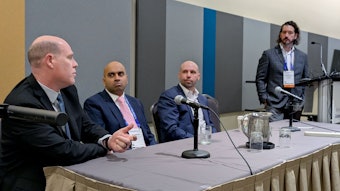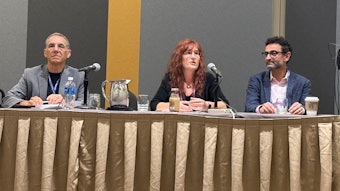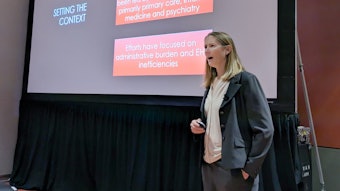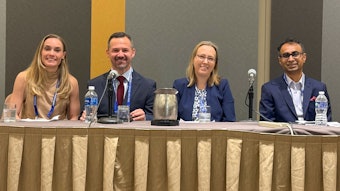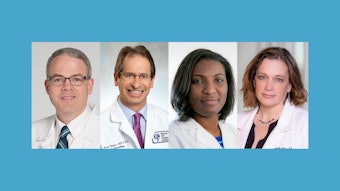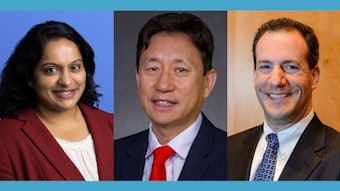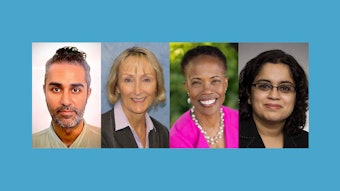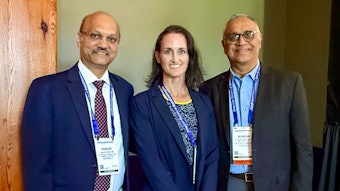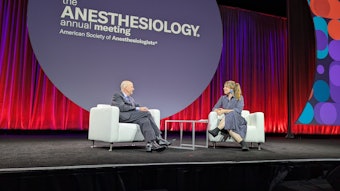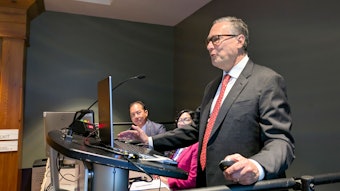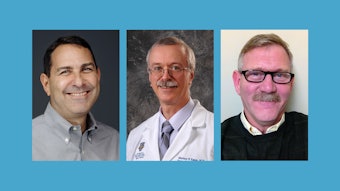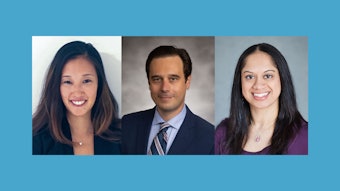Supporting global peers, improving patient care
International medical graduates offer experience, advice, and humility for those walking in their shoes.
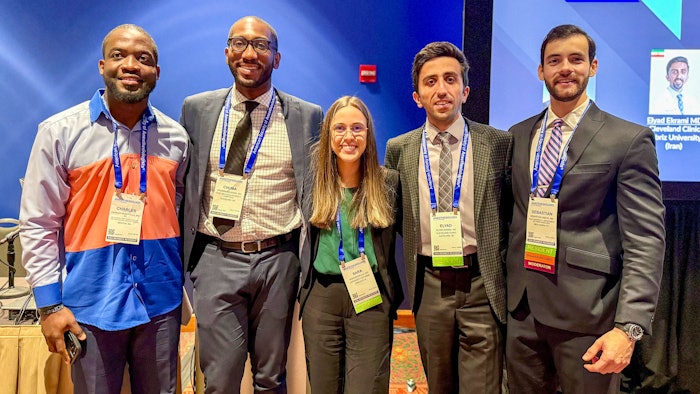
Help yourself, help others. This message resonated throughout the Saturday morning session “Beyond Borders: Empowering International Medical Students and Graduates on the Journey to U.S. Residency.”
The “others” first refers to international medical graduates (IMGs) helping those who are about to begin their own journey to U.S. residency. But, ultimately, the “others” will also be patients — every doctor’s goal audience, whether they work in a clinical, research, academic, or administrative setting.
The panelists shared retrospective advice, practical pearls, and key elements of their journeys. Some parts of the process depend on country origination and end goals, such as electing to apply for step 3 of the U.S. Medical Licensing Exam (USMLE) before or after the residency application.
Sebastian Amaya, MD, an Anesthesiology Resident at Yale School of Medicine, began the presentation by setting the stage for attendees.
“Everybody has their own journey, and every journey is unique,” said Dr. Amaya, who is from Colombia and attended the Universidad El Bosque Colombian School of Medicine.
Dr. Amaya was joined by:
- Sara Medellìn Reina, MD, also from Colombia, an Anesthesiology Resident at the University of Iowa in Iowa City
- Chuma Azoba, MD, from Canada and the Caribbean, an Anesthesiology Resident at University Hospitals/Case Western University in Cleveland, Ohio
- Elyad Ekrami, MD, from Iran, an Anesthesiology Resident at Cleveland Clinic
- Charles Manakpalah, MD, MS, from Liberia, an Anesthesiology Resident at Harvard Medical Center/Beth Israel Deaconess Medical Center in Boston.
Value and demand
The primary objective of the five-person panel was to share their individual experiences — including details of their education, licensing exams, and visa and residency application processes — to better equip their successive counterparts as well as to acknowledge and appreciate their shared journey.
Dr. Amaya testified about the value of IMGs, citing studies that racial and language concordance improve patient care, and global perspectives enrich patient care. He said these factors alone make IMGs invaluable.
Beyond that, he pointed to the need for additional doctors in the United States due to a projected shortage of between 37,800 and 124,000 physicians over the next 12 years, according to the Association of American Medical Colleges. Currently, IMG physicians account for about 25% of the U.S. physician workforce.
Make connections
Networking is vital to the residency process, the panel unanimously agreed, though it can vary based on background and preference. Among the presenters, they used various avenues, including:
- Mentor relationships
- Email and cold calling
- Social media
- Research groups, clerkships, or observerships
- Conferences and one-on-one, in-person meetings.
The networking approach doesn’t matter, Dr. Manakpalah said, as long as it feels comfortable, is strategic, and you make the most of it while knowing nothing is guaranteed.
Stand out
Another critical piece to the puzzle is setting yourself apart from other applicants during the submission and interview process. Dr. Medellìn Reina said she shared her hobbies of scuba diving and inline rollerblading — common interests in Colombia, but not so much in America. Dr. Azoba said he highlighted his prior career as a recruiter at Wayfair as well as his love for running.
Although USMLE scores are a big element of getting selected, Dr. Ekrami said it’s more important to not have any red flags on your exam results than to have a specific number, like 270.
A former IMG in the audience spoke up during the Q&A portion of the session, agreeing about the importance of putting your best foot forward.
“Don’t be afraid to be different, believe in luck, which leads to opportunity, and let people know how hard you work,” the attendee said. “Everyone is smart. What [interviewers] want is someone they can have a conversation with, work long hours, and build relationships with.”
Dr. Azoba, who went through the residency application process twice, said it pays to be optimistic, accept feedback, and optimize time. He contacted programs that he visited but didn’t match with, seeking to understand where he could improve. Then, he doubled down on rounding out his application with additional research recognition, targeted networking, and a two-week rotation in anesthesia at the program he wanted most.
“Circumstances don’t define your capacity, and you should never count yourself out; let others do that,” Dr. Azoba said. “Also, the world takes its cue by how you see yourself, so be positive.”
The little things also matter, said Dr. Amaya, such as sending letters of interest after signaling that have been personalized and proofread.
Follow through
Applying to programs is a numbers game, the panel agreed. They recommended prioritizing desired types and locations of programs accordingly. But matching is the most important outcome, ultimately.
“Everything can change your life. You can apply to 100 programs, and 95 won’t matter, but the other five will,” Dr. Ekrami said. “It is a game of luck, and if you do more things, you’ll have more chances.”
While matching at your number-one choice is an amazing outcome, Dr. Manakpalah said the journey is about being resilient. He applied for 180 hospital residency programs across multiple specialties, even though anesthesiology was his top preference. He also made a point to stay in touch with previous mentors and contacts, such as a colleague he worked with in Liberia’s Doctors Without Borders, who later wrote him a letter of recommendation.
Dr. Manakpalah’s final set of pearls resonated with the audience: “Target programs that have people like you already. Your chances are highest with a program that focuses on holistic application review rather than hard cutoff parameters. Your personal story and interview are your elevator pitch; be honest and communicate succinctly and confidently.”
For more information about the U.S. residency process — by residents, for residents — visit ASA’s “Residents in a Room” podcast series.
